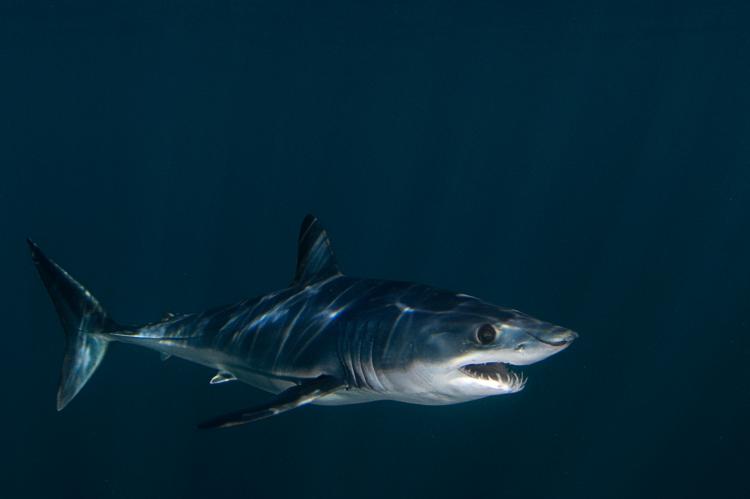Mako shark tracked for 14,800 km ended up in Baltimore
“St. Mary’s,” a young shortfin mako shark that was caught and tagged last year by researchers at Nova Southeastern University (NSU), has died. The shark logged 14,800 km (nearly 9,200 miles) throughout the Atlantic Ocean until the satellite pings were tracked on land in Baltimore last week.
Wikipedia:
Isurus is a genus of mackerel sharks in the family Lamnidae, commonly known as mako sharks.
The two living species are the common shortfin mako shark (I. oxyrinchus) and the rare longfin mako shark (I. paucus), and several extinct species known from fossils.
They range in length from 2.5 to 4.5 m (9 to 15 ft), and have an approximate maximum weight of 800 kg (1,750 lb). The family Lamnidae also includes sharks such as the great white shark and the porbeagle.
Mako sharks are capable of swimming at speeds of up to 60 km/h (37 mph), and jumping up to 7 m (23 ft) into the air.
The shark travelled from the chilly waters off Nova Scotia to the warm, inviting ocean near Venezuela to the clear waters of Puerto Rico and then north again to the waters where he was first caught.
NSU’s Guy Harvey Research Institute (GHRI) began tagging mako sharks in 2009 to study their migratory patterns and now undertakes expeditions worldwide to study them. The school’s marine experts have tagged mako sharks as far away as Mexico and New Zealand. In addition to makos, they have also tracked tiger, oceanic white tip and sand tiger sharks, as well as blue marlin.
"Please retrieve the tag and return if possible"
The loss of tagged fish and the data they were providing is a concern for researchers, who not only lose the animal and important information it was transmitting or collecting but also the equipment, which in some cases can cost up to $4,000 per tag. Each tag has a serial number and the manufacturer’s contact information. The fishermen are asked to get in touch with the manufacturer and provide information on where and when the fish was caught.
We’re asking fishermen who catch a tagged animal to do one of two things – if it’s alive and healthy, please release the animal as quickly as possible so it can continue its travels and provide important scientific data. If it is dead, please retrieve the tag and return it if possible.
Mahmood Shivji, Ph.D., NSU professor and director of NSU’s GHRI and NSU’s Save our Seas Shark Center.


